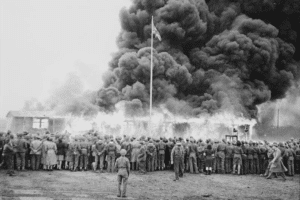
A Charred Memory: A Fragment of Bergen-Belsen at The Black Watch Museum
As the Collections Assistant at The Black Watch Museum, I spend my days surrounded by conflict-related artefacts such as medals, uniforms, letters, and photographs that
Home » Blog » Black Watch History » A Charred Memory: A Fragment of Bergen-Belsen at The Black Watch Museum
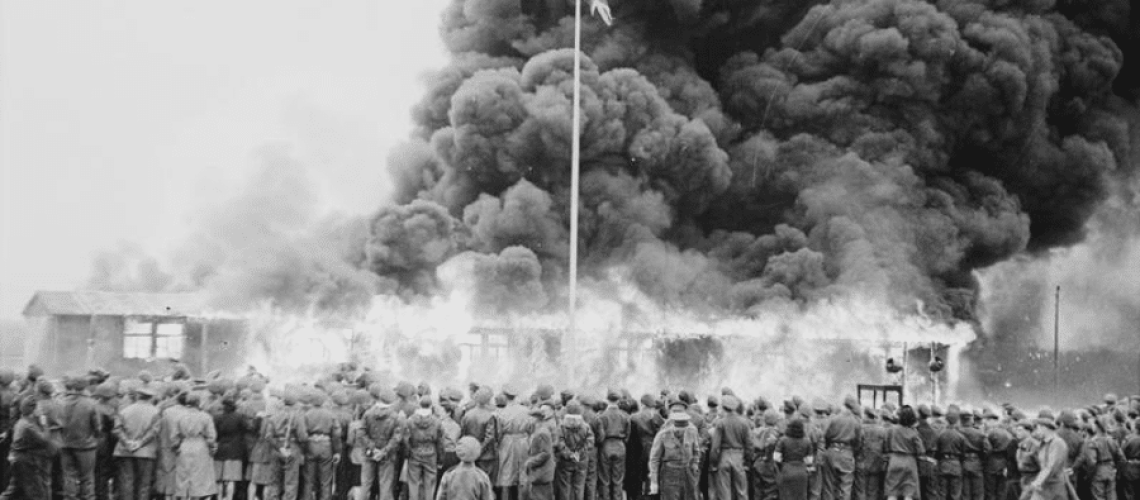

As the Collections Assistant at The Black Watch Museum, I spend my days surrounded by conflict-related artefacts such as medals, uniforms, letters, and photographs that tell stories from the past. However, certain objects speak louder than others.
Recently, while conducting a collection review, I came across a small, scorched piece of wood. At first glance, it seemed unremarkable, just a charred fragment, rough to the touch, brittle with age. But its label caught my eye and stopped me cold: Piece of a hut from the notorious Belsen concentration camp. 10,000 unburied dead were found here. 14 October 1945.
The weight of that sentence was immediate. I held in my hands not just a relic, but a witness.
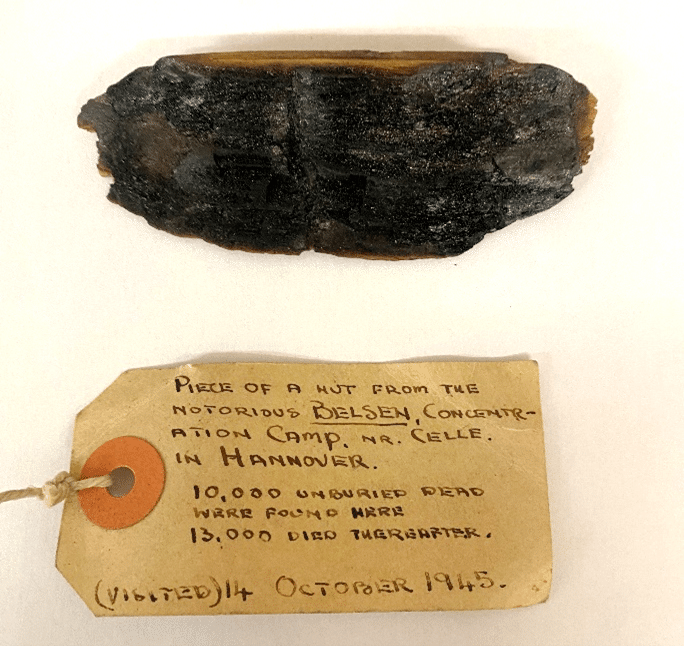
Bergen-Belsen, located in northern Germany, was first built as a Prisoner of War camp in 1940, but in 1943, it became a concentration camp for Jews, political prisoners, Roma, and anyone the Nazi regime deemed ‘undesirable.’
By the time British forces liberated the camp in 1945, more than 50,000 (holocaust museum) people had died there from starvation, disease, and neglect. The liberators, including soldiers from the British and Canadian forces (Scolfiled), walked into a nightmare, tens of thousands of unburied bodies, skeletal survivors wandering among the dead, and a stench of death that defied description. It was, in the words of one British officer, “the ultimate blasphemy against humanity.” (Bentine, Page 281)
This small piece of burnt wood likely came from one of the camp’s barracks, overcrowded, disease-ridden huts, where people were crammed together in horrific conditions. Fire later consumed many of these buildings, the sights in the camp were so devastating, that the allied forces burnt it to the ground. This wood, scarred and silent, is a relic of unspeakable pain.
It is a reminder of the lives lost, lives who passed through Bergen-Belsen and never returned. And it reminds us, too, of the liberators who bore witness, and who carried that burden home with them.
A fragment of ceramic tile that I also discovered in the same small box adds to the emotional impact of that finding, the label simply said: “Piece of a door plate from Josef Kramer’s House at Belsen Concentration Camp.” Kramer, infamously known as the “Beast of Belsen,” was the camp commander during its final months. A committed member of the SS, his brutality was notorious even among other Nazi officers. He oversaw the camp during its most horrific phase, when starvation and disease ran rampant, and thousands died every week.
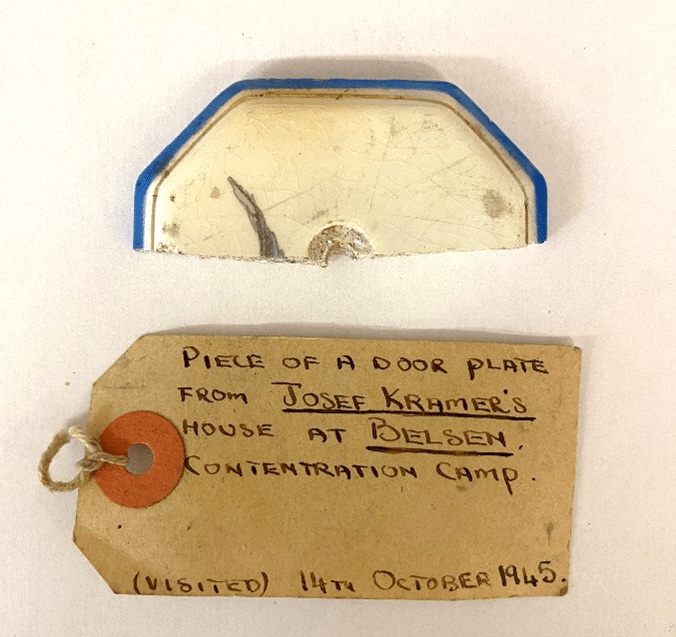
This fragment, small and silent, was once part of the physical space occupied by a man responsible for so much devastation. To hold it is to confront the banality of evil. The grim reality that cruelty has a face and a home.
In museums, we often hold items that represent heroism, strategy, and sacrifice. But some, like these ones, are different. They speak not of triumph, but of suffering. Not of what was done for people, but what was done to them. It’s a reminder we must preserve history, as difficult as that may be. It is how we remember fully, truthfully, and responsibly.
At The Black Watch Museum, our mission is to preserve the stories of those who served and those affected by war. This artefact, as small as it is, holds a story that transcends borders, armies, and time. It speaks to the absolute necessity of memory, of never forgetting what can happen. In a world where the voices of survivors grow fainter with each passing year, objects like this remind us to listen, to carry their stories forward.
Findings like these remind me of why I chosen this profession, as well as the importance of museums in conserving and displaying history for future generations so we shall never forget.
Michael Bentine, The Reluctant Jester (Anstey, England: Ulverscroft, 1993), page 281.
https://encyclopedia.ushmm.org/content/en/article/bergen-belsen
The Black Watch: Fighting in the Front Line 1899-2006 by Victoria Scholfield

As the Collections Assistant at The Black Watch Museum, I spend my days surrounded by conflict-related artefacts such as medals, uniforms, letters, and photographs that
Just before heading up the stairs to Gallery 4 visitors will see the painting of someone who, on first glance, might not look like a
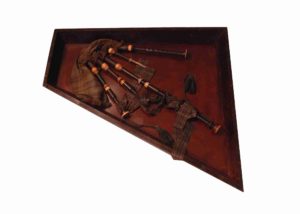
Rosie Waine is the William Grant Foundation Research Fellow at the National Museum of Scotland. Here she writes how the Black Watch Museum & Castle

3 thoughts on “A Charred Memory: A Fragment of Bergen-Belsen at The Black Watch Museum”
It’s fascinating how a small, ordinary object can hold such a powerful story
Such an interesting and emotional read. Fascinating items and a powerful point of view of the author.
Wow! Love it and you work